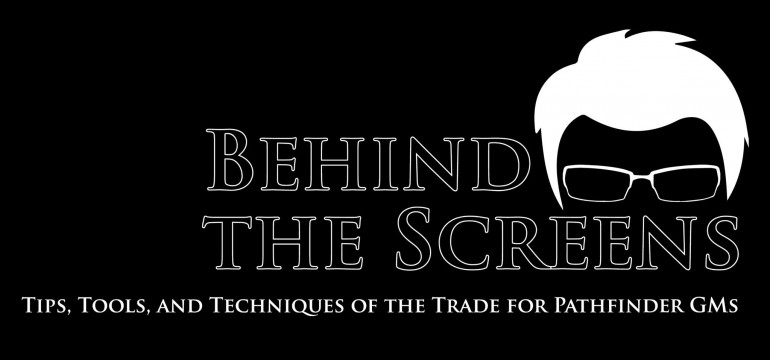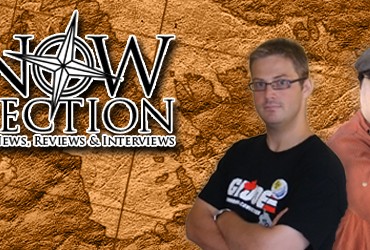Miniatures weren’t always as ubiquitous in fantasy RPGs as they are now. Time was that maps were just for reference and everything, from roleplaying to combat happened in your imagination. If you did want a miniature to represent your character you had an extremely limited selection of lead or pewter available from only a few companies. Or if you were skilled enough or knew the right people you’d just cast your own.
But times change. Miniatures soon became as integral to the game as dice. TSR and later WotC started producing plastic and resin figures that you could open up and play with. And companies like Games Workshop and Ral Partha began introducing their own products to a ever-broadening consumer market. The popularity of 3rd Edition Dungeons & Dragons solidified the presence of miniatures at the table with rules codifying miniature and battlemat centered combat.
Oh what a time to be a tabletop roleplaying gamer now. Both Paizo and WotC, the two RPG industry giants have regularly releasing miniature lines: Pathfinder Battles, Iconic Heroes, D&D Miniatures, and D&D Attack Wing. And then there’s GW, Reaper Miniatures, and a host of other miniature makers to fill in the gaps. Heck, there’s a company called Hero Forge that allows you to customize and 3D print your own miniatures. Truly we live in a Golden Age of 25mm scale facsimile.
But is there such thing as too much of this miniature thing? Some, nostalgic for the good old days of Theatre of the Mind might say yes. Miniatures distract from roleplaying. They take time to organize, to find the exact model you’re looking for. They limit creativity. They add a layer of complication to an already complicated game. Indeed, 5th Edition D&D doesn’t require miniatures to be part of your game at all. So this generation of RPG gamer is introduced to the concept that minis & maps aren’t the only way to play.
And maybe there’s truth to these arguments. Roleplaying games are complicated. Because of the permissive nature of the rules language there are infinitely more things you CANNOT do than things you can. The highly tactical focus of action economy in 3.5 Edition D&D iterations can mean that new players can feel overwhelmed with rules questions in any given fight. How far can I move? What type of action is that? What’s the differences between the terrain in that square verses this one? Why doesn’t he provoke and Attack of Opportunity where but he does provoke one there? The answer to such questions might be obvious to a veteran player looking at a battlemat but could serve as a strong deterrent or barrier of entry to the uninitiated gamer.
Furthermore, mismatched miniatures might well pull players out of the immersive experience. When your party decides to mount up on horses but the only large based quadrupeds you have are dragons; that can lead to some questions. Similarly, if the same bandit miniatures are used for every humanoid looking creature your PCs encounter. Addressing this issue by having the perfect miniature for every encounter, or only designing encounters around the miniatures you have can be problematic. Financially for the former, and creatively for the latter.
As a tabletop miniature wargamer, I don’t really find these issue to be problematic. Although I’m aware they exist for some groups. At this point, I have spent far too much money on appropriate plastic likenesses to be comfortable admitting to. I’ve spent hours; days even, making sure that “What You See Is What You Get” on each individual model. And I’m far too attached to my Pathfinder Battles collection to ever part with it. So my gaming group is blessed (or cursed) with my addiction to plastic crack. I’ve custom built miniatures that I’ve needed for a specific encounter out of the hacked up bits and pieces of other minis that I have lying around. For any wargaming hobbyists amongst my readership, this should sound like nothing new. It’s part and parcel with playing the game. But I’m sure that your average tabletop roleplaying gamer doesn’t feel the need to go to such lengths
And there are certainly alternatives to my particular approach. Nowhere in the game rules does it say you need to have the exact miniatures to represent whatever it is you need to have the PCs encounter. I’ve seen people use 0.75” diameter colored plastic pips to represent NPCs or monsters. Or little cardboard cutouts that they’ve doodled on. I’ve heard of some groups using candy to represent enemies. And if you kill one you get to eat it.
Ultimately it’s up to you and your group to figure out what’s best for your game. If you want to use painstakingly perfect painted miniatures for each and every thing that needs representation for your table, go for it. If you want to use a can of Soda with Shaquille O’Neal’s face on it, go for it. And maybe you don’t even need miniatures at all. Try different things to figure out what’s fun for your group. Because really, that’s the bottom line.
How does your group handle abstract representation? Do you use a battlemat and miniatures? Are you operating in the Theatre of the Mind? Or do you fall somewhere in between. Let us know in the comments section below!






I’ve found Paizo’s line of Pawns helpful and affordable for supplementing minis. I usually grab a box when I get a new bestiary, and a set when I start an adventure path- in between those, I’ll pick up Pathfinder Battles or Icons of the Realm to get minis for my players.
Yeah. The Pawns are a great (and affordable) alternative. My Iron Gods group just started using them. They’re certainly much easier to store than plastic or metal miniatures!
For me, the ideal would be playing with fully-detailed 3D terrain, accurate miniatures, dramatic lighting, and visual and audio effects. I haven’t provided that total package for my players (yet?), but I do like to add in parts of that ideal, as time and budget allow.
Until I jump in and start buying terrain, I’m content with drawing as detailed as I can on my flip and vinyl roll-out maps, adding in props and features that I make myself. I have a thing for grabbing rocks from the landscaping in my yard and using them to represent outcrops and such.
Also don’t overlook the possibility of building your own terrain. Foamcore is pretty cheap. A steady hand, a sharp crafting knife, and some imagination can do wonders and save you lots of money.